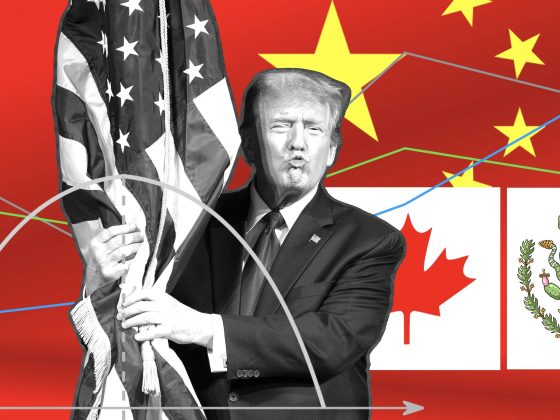BOSTON & LONDON–(BUSINESS WIRE)–William Davies, Deputy Global Chief Investment Officer at Columbia Threadneedle Investments, outlines his outlook for 2022:
- The economic backdrop through 2022 may present opportunities for investment. We expect the recent divergence of performance of growth versus value companies will become more modest.
- We will continue to favour quality companies which demonstrate good long-term returns and consideration of Environmental, Social and Governance factors, utilising our investment research capabilities.
- Opportunities to invest in Emerging Markets both for equities and fixed income will be a point of focus and equities overall should remain favourable.
- We believe 2022 will be a strong year for “rising stars” in fixed income as many high yield companies achieve investment grade status.
Interest rates have been historically low for more than a decade, dampened by the flood of monetary stimulus introduced in the wake of the global financial crisis. In 2022 we expect this to change. As we move towards economic recovery from the Covid-19 pandemic, next year will be marked by a role-reversal in monetary policy: crisis support, stimulus and spending replaced by recovery, repair, reduced fiscal stimulus and a return towards “normal”. Political compromise will be key, not least in the US, as governments tackle the transition. As the support for asset prices is withdrawn, active management – unearthing companies with the enduring qualities that will help them navigate volatility – will be essential to success in 2022.
Inflation: No time to panic
Earlier in 2021 we predicted that the reopening trade, coupled with supply chain issues, would create a transitory inflationary environment, which it has. While this transitory period is lasting longer than anticipated, our view remains that inflation will moderate, as we go through 2022.
Helpfully, central banks continue to look through inflationary pressures; for example the US Federal Reserve has not appeared overly concerned by higher and persistent US inflation, which in previous cycles would have been perceived as a major headwind. Investors and markets, too, are fairly sanguine. Equity markets are at highs, buoyed in some areas by strong M&A (most obviously in the UK), while the steepening and flattening yield curve has been interesting to watch without causing as much consternation as we might expect. This is in stark contrast to previous talk of shifts in monetary policy in 2013 and 2018 which induced negative market reactions, not least the taper tantrum. Now, the market feels more poised, having waited so long for clarity. This makes us more confident for 2022, albeit in a slowing growth environment.
One reason we believe inflation will ultimately fall in 2022 is due to improvements in the supply chain. Regardless of whether you believe Covid or other structural and political factors (in Europe especially) are to blame, many of us underestimated the degree to which the supply chain would impact the corporate backdrop. If overordering then falls, there remains the risk of an inventory-led recession in some areas, notably automobiles and semi-conductors, as manufacturers who underestimated order levels during the pandemic have depleted inventories to cope. Indeed, recent estimates from industry analysts see semiconductor shortages extending into 2023.
But despite the ongoing challenge of disruption at transport hubs and a shortage of labour, we have seen recent signs of improvement. In some sectors, notably retail, companies continue to benefit from a less concentrated and more agile supply chain, while manufacturers, transporters and retailers are all working hard to make up ground lost in 2021 against steady consumer demand. It is our belief that the supply chain headwinds will continue to become less dominant in 2022, but it may well be towards the latter half of the year before the positive impacts are felt.
Quality will out
We have seen good earnings recovery this year, a reflection of relatively strong balance sheet management by corporates, with stricter cost controls and strong discipline around dividends and share buybacks. The reopening trade and enduring rebound in demand has resulted in heightened cash flows which have boosted corporate coffers, giving companies the tools to reduce leverage.
But given those supply chain bottlenecks and the persistence of inflation, it will be harder for companies to beat forecasts in the way they have in 2021, at least in the short term. For companies, we anticipate next year will be a return to the familiar cycle of earnings disappointment as opposed to positive surprises.
In previous cycles when the yield curve has flattened, the impact on equities has seen investors seek quality companies that could survive any impending rates shock. As we head into 2022 we have seen the yield curve steepen, flatten and rise across the curve again, and that has led to a more mixed scenario in terms of what is leading the market – I do not see that changing in the short term, but some areas that outperformed more recently might struggle, such as “meme” stocks – those that become popular among retail investors through social media platforms. The companies we like – quality businesses with solid balance sheets and competitive advantages – stand a better chance of weathering volatility.
Fixed income: credit valuations leave little room for error
Investors flooded back into the bond market in 2021, riding the liquidity wave that made most risk assets more attractive. But valuations as a result are elevated, and we are wary of assets that are less liquid than others; on a global basis this would include structured credit and municipal bonds. With passives tracking their way towards indices that contain many over-leveraged entities, we feel an active approach will bear fruit in 2022.
Given what we believe inflation will be present for longer, alongside the withdrawal of stimulus, one might expect bond yields to move higher in 2022, which is not a terrific outlook. But as companies move back to a traditional expansion phase of the business cycle, our active targeted approach, focusing on improving corporate and consumer balance sheets paired with a “smart” focus on cost management, will lead to better outcomes in 2022. Recently we have seen elements of spreads widening more at the weaker end than in the investment grade (IG) universe, which is what one would expect in a slowdown. If this continues we might consider IG more attractive than high yield, although “rising stars” remain of interest to us. And if any slowdown is more severe than we think, we would expect greater support for government bonds.
Equities: There is no place to hide
It will be harder for companies to beat forecasts in the way they did in 2021, at least in the short term. In fact, I expect a greater variation in equity results through the year, and that environment may present opportunities for active investors. The continuing reopening trade (and an environment of above average GDP growth) presents opportunities for cyclical outperformance, particularly in the first half of the year, but even this play will have uneven winners and losers. As stated, we believe quality will out in the long term. By quality we mean companies with solid balance sheets, strong competitive advantages and strong sustainability credentials. Regardless of region, it is our belief these companies will survive any slowdown or volatility in 2022.
Regions
Looking regionally, many investors have turned away from China in droves this year because of its well-publicised regulatory crackdown coupled with an imbalanced property market. I recognise the concerns about regulation, not to mention outbreaks of “Delta” Covid strains, extreme weather affecting food production and transportation, and slowing growth. But China recovered first from Covid, and did so with a tighter policy framework than other regions. While growth in the country is of major concern, to my mind that increases the likelihood of Chinese authorities providing stimulus in 2022 – so I have a balanced view. There is opportunity in China (and the rest of the emerging markets universe) but it requires fundamental research and a bottom up approach — building portfolios company-by-company rather than a thematic approach.
In Japan, Prime Minister Fumio Kishida does not represent a positive catalyst in the way Abe did. Without this political spark and the expectation of meaningful change, Japan has become a less exciting region for us as investors, notwithstanding improvements in supply chains that will help the country’s industrial nature. That said, as active investors we are not devoid of opportunities and there is often more breadth in the Japanese market than we give it credit for, not least in the technology and service sectors. The latter is unusual given Covid, but there are ongoing initiatives designed to improve productivity that are unearthing opportunities for us.
The UK savings industry has typically been invested to the tune of 60% in sterling-based assets, but recently domestic investors have looked more globally for risk-adjusted returns. This has been the right call given the UK equity market has been a serial underperformer, and continues to be hit by lower flows. But corporate entities with deep pockets do not care about flows; they care about identifying cheap and undervalued assets they can acquire – opportunities which are plentiful in the UK. It is possible to over-emphasise the extent to which Brexit is playing a part in the UK and European economies. What we do know is that the UK is a less open economy than it was five years ago – and that will continue to be a factor, creating both opportunities and challenges.
Looking to Europe, we expect strong growth, albeit with the potential for supply chain shocks, already evident in the lack of HGV drivers and reduced labour pool. These factors will likely lead to higher than anticipated inflation and peak stimulus. There is also a theme of change in the region: Angela Merkel in Germany remains a strong presence, but is preparing to step down – a Germany led by the SPD’s Olaf Scholz along with the Greens and FDP could see more volatility and a preponderance of stimulus. Added to that we have a presidential election in France in April – and French elections are notoriously difficult to predict. As events these will be market influencers, but to what extent it is difficult to estimate.
Conclusion
2022 will be a year of change. We have had an environment of fiscal and monetary stimulus for some time, and when taps are kept open investors do not mind how much governments and central banks spend or how big a national deficit is. But change is coming, however unwanted it might be, and we face a world of economic repair in which markets and investors must consider the impact of reduced fiscal stimulus.
As active managers we are well-placed to navigate this changing world. Our expertise is diverse, with more than 650 investment professionals sharing global perspectives across all major asset classes and markets. It is that expertise, our culture of collaboration, as well as a focus on research intensity, that historically allowed us to maintain strong performance over the long term. This will continue in 2022.
Notes to Editors
About Columbia Threadneedle Investments
Columbia Threadneedle Investments is a leading global asset manager that provides a broad range of actively managed investment strategies and solutions for individual, institutional and corporate clients around the world.
Together with BMO GAM (EMEA) we have more than 2500 people including over 650 investment professionals based in North America, Europe and Asia1. We manage £530bn / €617bn / US$714bn2 of assets across equities, fixed income, multi-asset, solutions and alternatives.
Our priority is the investment success of our clients. We know investors want strong and repeatable risk-adjusted returns and we aim to deliver this through an active and consistent investment approach that is team-based, risk-aware and performance-driven. Our investment teams around the world work together to uncover investment insights. By sharing knowledge across asset classes and geographies we generate richer perspectives on global, regional and local investment landscapes. The ability to exchange and debate investment ideas in a collaborative environment enriches our teams’ investment processes to ensure the best insights are applied to portfolios. More importantly it results in better informed decisions for our clients.
Columbia Threadneedle Investments is the global asset management group of Ameriprise Financial, Inc. (NYSE:AMP), a leading US-based financial services provider. As part of Ameriprise, we are supported by a large and well-capitalised diversified financial services firm.
Important Information.
For marketing purposes.
Past performance is not a guide to future performance.
The value of investments and any income is not guaranteed and can go down as well as up and may be affected by exchange rate fluctuations. This means that an investor may not get back the amount invested.
This material is for information only and does not constitute an offer or solicitation of an order to buy or sell any securities or other financial instruments, or to provide investment advice or services. Information obtained from external sources is believed to be reliable but its accuracy or completeness cannot be guaranteed.
The views expressed are as of the date given, may change as market or other conditions change and may differ from views expressed by other Columbia Threadneedle Investments (Columbia Threadneedle) associates or affiliates. Actual investments or investment decisions made by Columbia Threadneedle and its affiliates, whether for its own account or on behalf of clients, may not necessarily reflect the views expressed. This information is not intended to provide investment advice and does not take into consideration individual investor circumstances. Investment decisions should always be made based on an investor’s specific financial needs, objectives, goals, time horizon and risk tolerance. Asset classes described may not be suitable for all investors
In the EEA: Issued by Threadneedle Management Luxembourg S.A. Registered with the Registre de Commerce et des Sociétés (Luxembourg), Registered No. B 110242 44, rue de la Vallée, L-2661 Luxembourg, Grand Duchy of Luxembourg.
In Switzerland issued by Threadneedle Portfolio Services AG, Registered address: Claridenstrasse 41, 8002 Zurich, Switzerland.
In the UK: Issued by Threadneedle Asset Management Limited, registered in England and Wales, No. 573204. Registered Office: Cannon Place, 78 Cannon Street, London EC4N 6AG. Authorised and regulated in the UK by the Financial Conduct Authority.
In the Middle East: this document is distributed by Columbia Threadneedle Investments (ME) Limited, which is regulated by the Dubai Financial Services Authority (DFSA).For Distributors: This document is intended to provide distributors’ with information about Group products and services and is not for further distribution. For Institutional Clients: The information in this document is not intended as financial advice and is only intended for persons with appropriate investment knowledge and who meet the regulatory criteria to be classified as a Professional Client or Market Counterparty and no other Person should act upon it.
In Australia: Issued by Threadneedle Investments Singapore (Pte.) Limited [TIS], ARBN 600 027 414. TIS is exempt from the requirement to hold an Australian financial services licence under the Corporations Act and relies on Class Order 03/1102 in marketing and providing financial services to Australian wholesale clients as defined in Section 761G of the Corporations Act 2001. TIS is regulated in Singapore (Registration number: 201101559W) by the Monetary Authority of Singapore under the Securities and Futures Act (Chapter 289), which differ from Australian laws.
In Singapore: Issued by Threadneedle Investments Singapore (Pte.) Limited, 3 Killiney Road, #07-07, Winsland House 1, Singapore 239519, which is regulated in Singapore by the Monetary Authority of Singapore under the Securities and Futures Act (Chapter 289). Registration number: 201101559W. This advertisement has not been reviewed by the Monetary Authority of Singapore.
In Hong Kong: Issued by Threadneedle Portfolio Services Hong Kong Limited 天利投資管理香港有限公司. Unit 3004, Two Exchange Square, 8 Connaught Place, Hong Kong, which is licensed by the Securities and Futures Commission (SFC) to conduct Type 1 regulated activities (CE:AQA779). Registered in Hong Kong under the Companies Ordinance (Chapter 622), No. 1173058.
In the USA: Columbia Management Investment Advisers, LLC (CMIA) is an investment adviser registered with the US Securities and Exchange Commission.
Columbia Threadneedle Investments is the global brand name of the Columbia and Threadneedle group of companies.
Adtrax: 3946381
1 As at 8 November 2021, Columbia Threadneedle Investments including BMO GAM (EMEA)
2 As at 30 September 2021









